America's Imitation Plaster: Tin Ceilings
As Americans, we can feel patriotic when considering tin ceilings. It’s one of the few decorative elements found in the Victorian Age that didn’t come from directly from England or another part of Europe.

Editor’s note: This story originally ran in 2010 and has been updated. You can read the previous post here.
As Americans, we can feel patriotic when considering tin ceilings. It’s one of the few decorative elements found in the Victorian Age that didn’t come from directly from England or another part of Europe.
They originated in the good old U.S.A., but were inspired by European decor, and from the highest examples of such.
By the mid-1800s, photography, books and actual travel had made the wonders of the tradition of fine plasterwork — as found in the manor houses, churches and government buildings of England and other parts of Europe — known to Americans, and they wanted it, especially the growing numbers of the up and coming middle class.
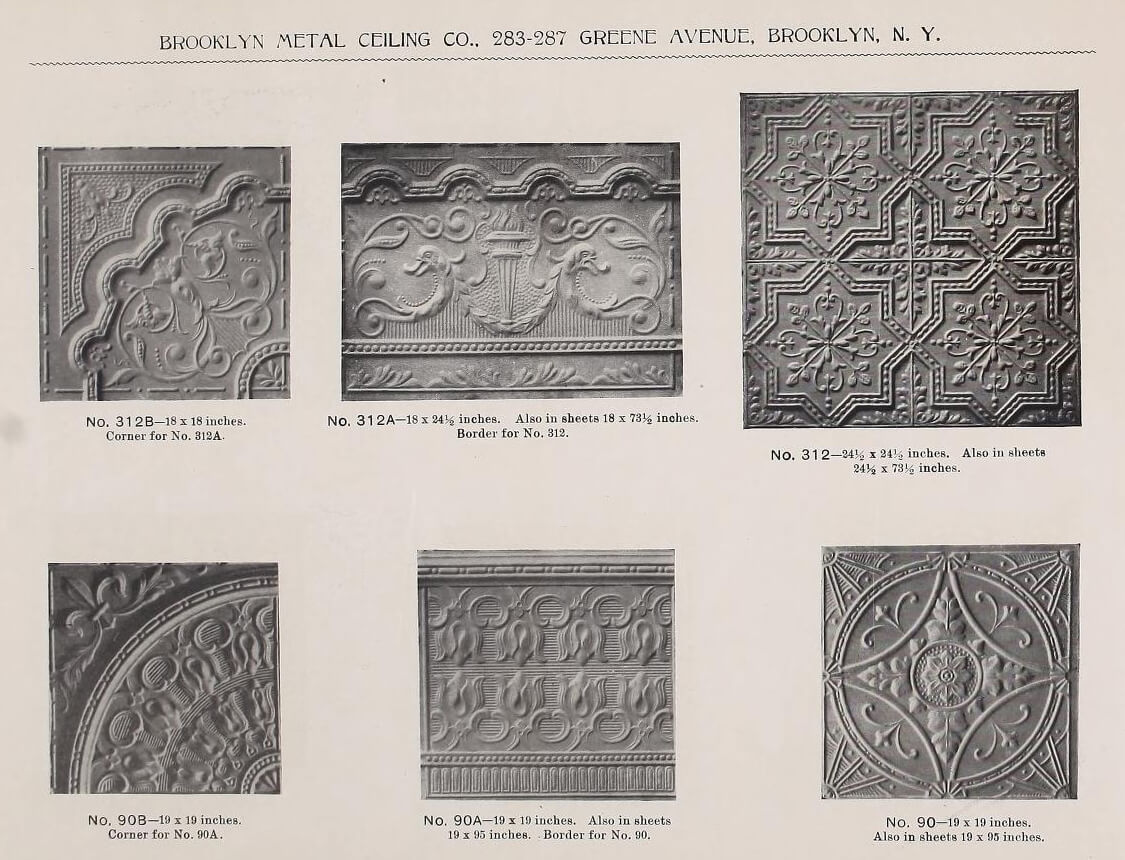
But decorative plaster ceiling elements were heavy, difficult to ship, and hard to install, and therefore exceedingly expensive and impractical. So America turned to technology to solve the problem. Some smart person thought of stamping designs on sheets of thin, rolled out tin, and an important decorative industry was born.
Thin sheets of rolled tin or steel were placed on a raised cast iron mold, called the die, and a heavy cast iron plate, called the tool, was raised by ropes and dropped, causing the design to be permanently imprinted onto the tin.
By the late 1870s, tin began to appear on the ceilings of homes and businesses.
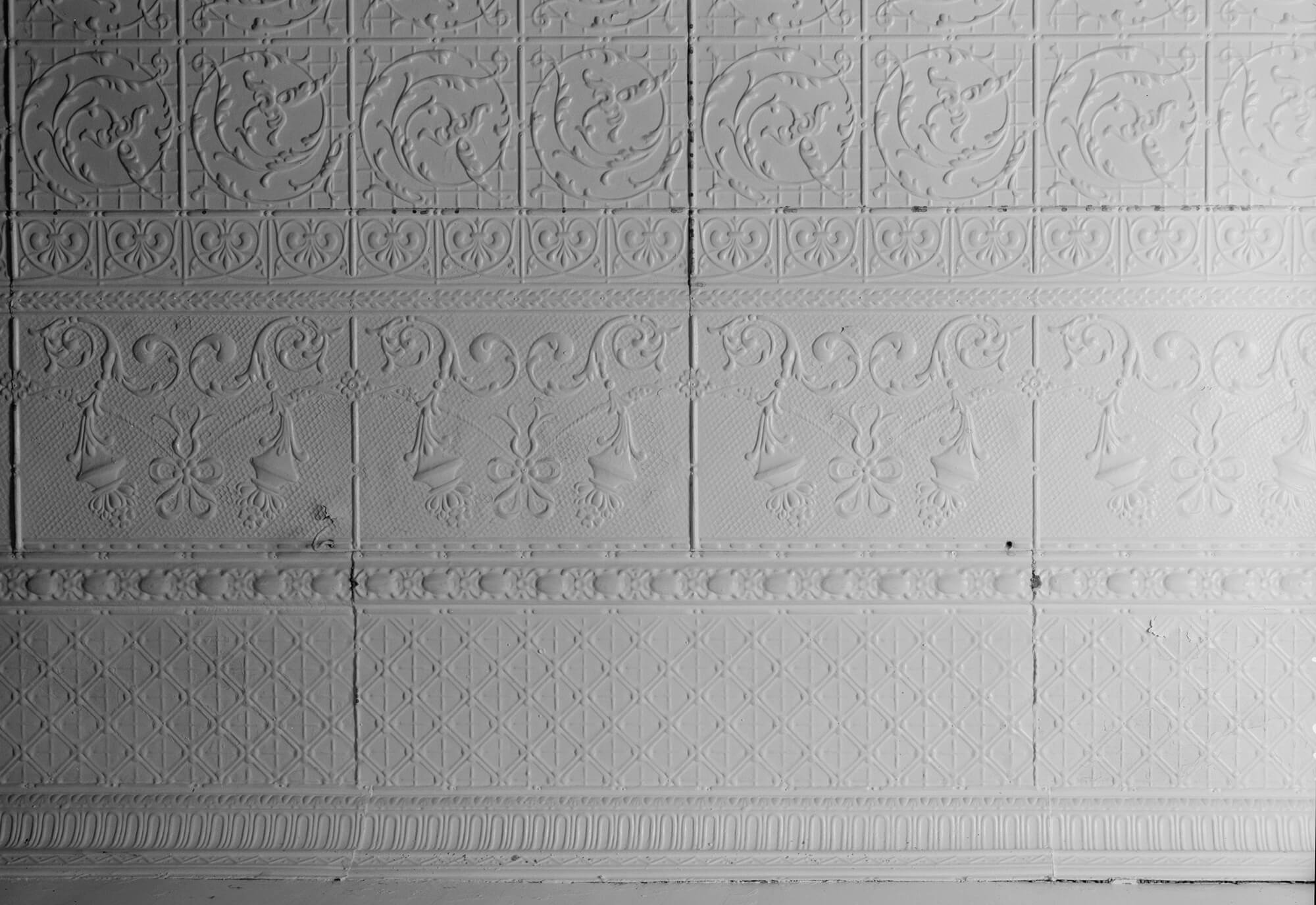
Between 1890 and 1930, there were at least 45 manufacturers of tin ceilings in the U.S., most of them being in New York, Ohio and Pennsylvania, all near railroad lines that could deliver the tin directly to contractors across the country.
The tin was usually painted white, mimicking hand formed or molded plaster, and tin ceilings could be found in parlors and dining rooms.
Commercial uses also abounded, with some of the most ornate designs appearing in stores, offices and restaurants — even garages and service stations, all places where tin panels were often used as wainscoting as well as ceilings.
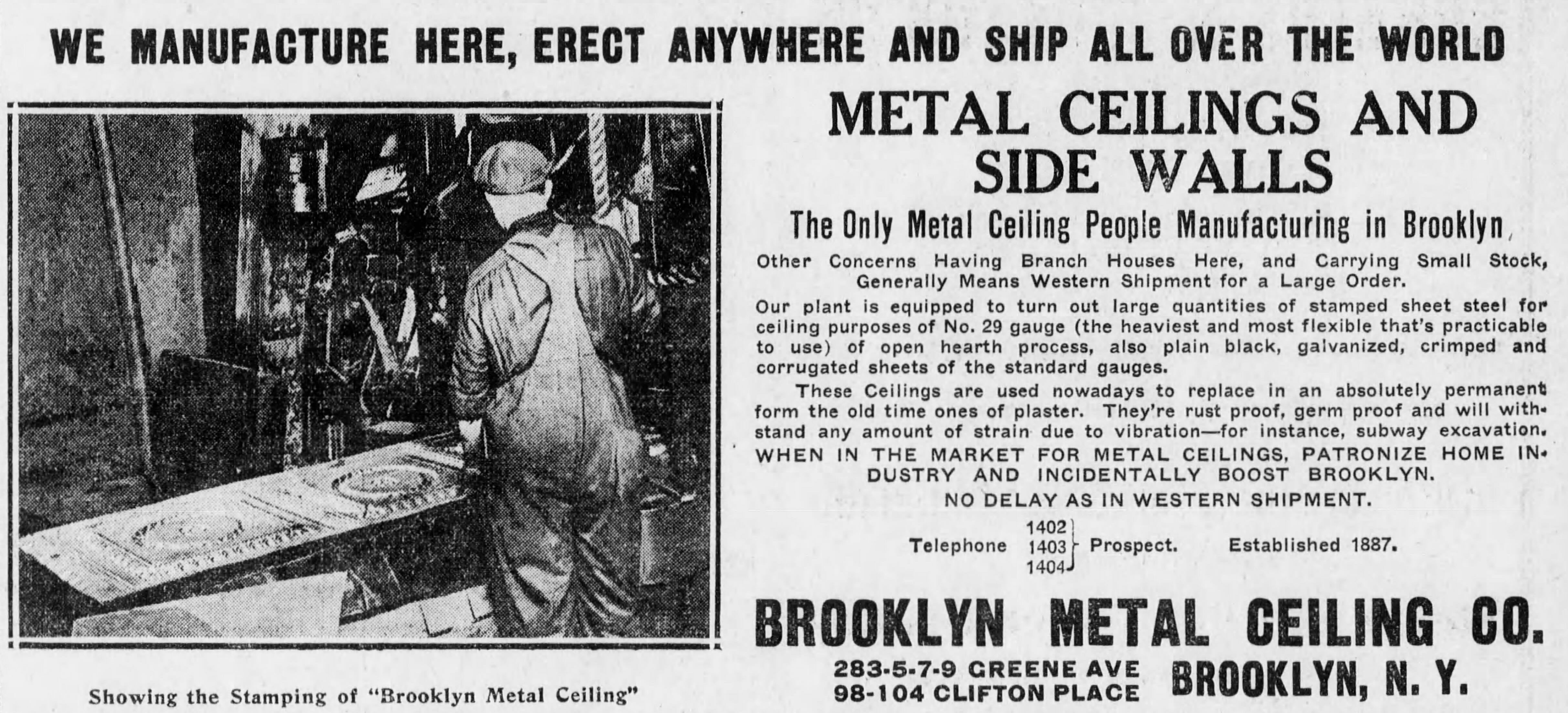
By the turn of the century tin ceilings became popular in the service wing of homes as well, with simple designs gracing ceilings in kitchens, hallways and more informal dining areas.
This coincided with the late Victorian trend towards high standards of cleanliness, accelerating the popularity of tin ceilings, as they were seen as more sanitary than simple plaster. Another factor in their favor was their fire resistant properties, which also made their use so prolific in both commercial and residential applications.
The late 1800s saw sale and use of decorative tin spread abroad, to all of North America, Australia and South Africa.
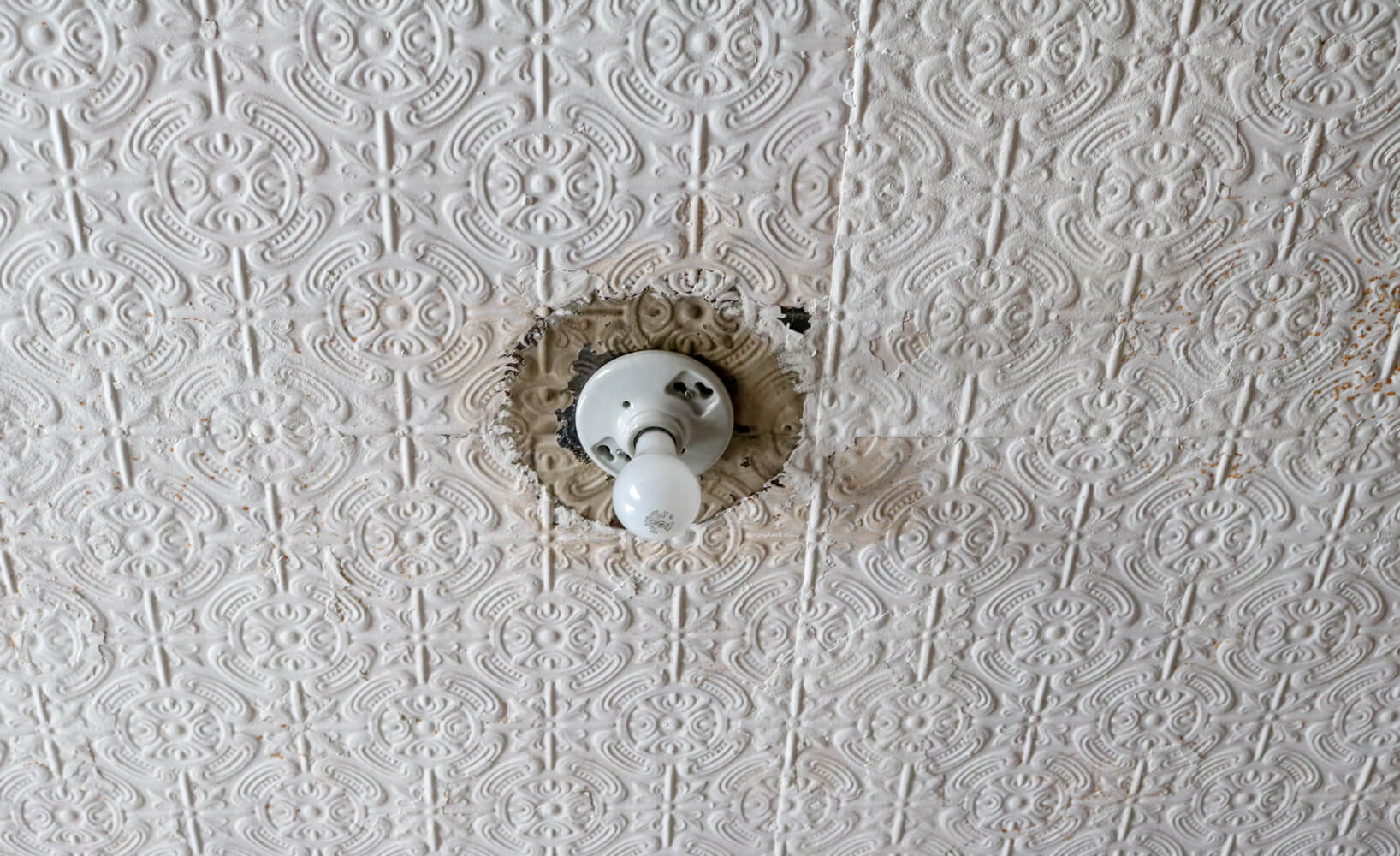
By the 1930s, the popularity of tin had run its course. As World War II progressed, metal was needed for the war effort, and most of the manufacturers of pressed tin went out of business or began manufacturing other products.
It became harder and harder to find replacement pieces for damaged ceilings and panels, and as a result, many tin ceilings were torn out and replaced with sheetrock. Another popular decorating phenomenon of the mid-20th century was the dropped acoustic tile ceiling.
Many old house owners simply installed lower ceilings, covering tin or plaster in the name of modernity and to save energy by making rooms smaller. It was not until the restoration boom, beginning in the late 1970s, that tin began to get attention again.
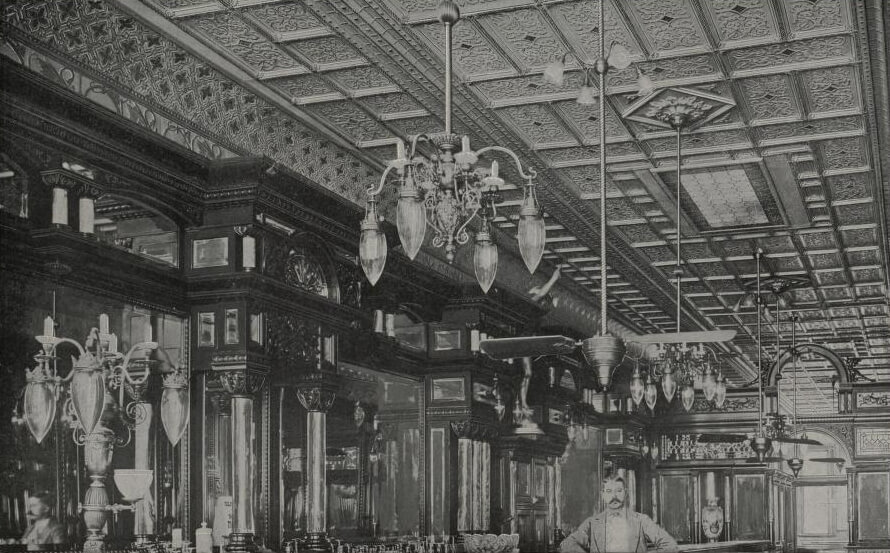
Some of the oldest companies were found to still be in business, and new companies started up, using the old patterns and dies. Today, tin ceiling panels are quite easy to come by, and a quick search on the internet reveals companies all over.
Even Home Depot now sells tin ceiling tiles. Some of the most interesting tin patterns are from Australia, where tin is also enjoying a healthy resurgence of popularity.
The new ceiling panels are no longer tin, however. Most of the modern pressed tin is now aluminum. Copper and steel are also available in much more limited quantities.
Many of the modern companies now offer copper and verdigris copper finishes, as well as rusted and other aged and distressed faux finished surfaces, as well as classic unfinished silver or prepainted white.

Some companies also offer tiles with elements of the patterns highlighted in contrasting colors. Hundreds of patterns are once again available, as are backsplash panels, cornices and corner pieces.
Some of the most ornate patterns have never been replicated for the modern consumer. Many of these have deep relief with scrolls, cartouches, coffered and architectural designs, animals such as lions and eagles, along with cherubs, goddesses, and all kinds of floral designs, and truly resemble the fine plasterwork of Europe.
Many of the most ornate patterns and elements were used exclusively in commercial buildings, such as banks, mercantile stores, restaurants and office buildings — anywhere a customer could be impressed by a wealth of paneled detail, all coinciding with the wealth of decorative detail that was everywhere in the Victorian world.

How many times have we entered an old store and seen the remnants of a very finely patterned ceiling, usually half covered up or peeking out above a dropped ceiling? The more ornate tiled panels are collector’s items, and often appear at very high prices on eBay or at salvage yards.
If you have tin ceilings in your house, keep them. They are attractive, hide a multitude of sins, and add value to the home, as they remain a popular feature in detailed period homes. If in bad shape, they can be repaired, painted and offer many years more beauty.
Most tin ceilings have lead paint on them, so take the appropriate care if removing, or repairing, as one would with any lead paint surface, but it is not a cause for panic, unless you enjoy eating paint chips. Encapsulating old paint under new coats of paint does the job.
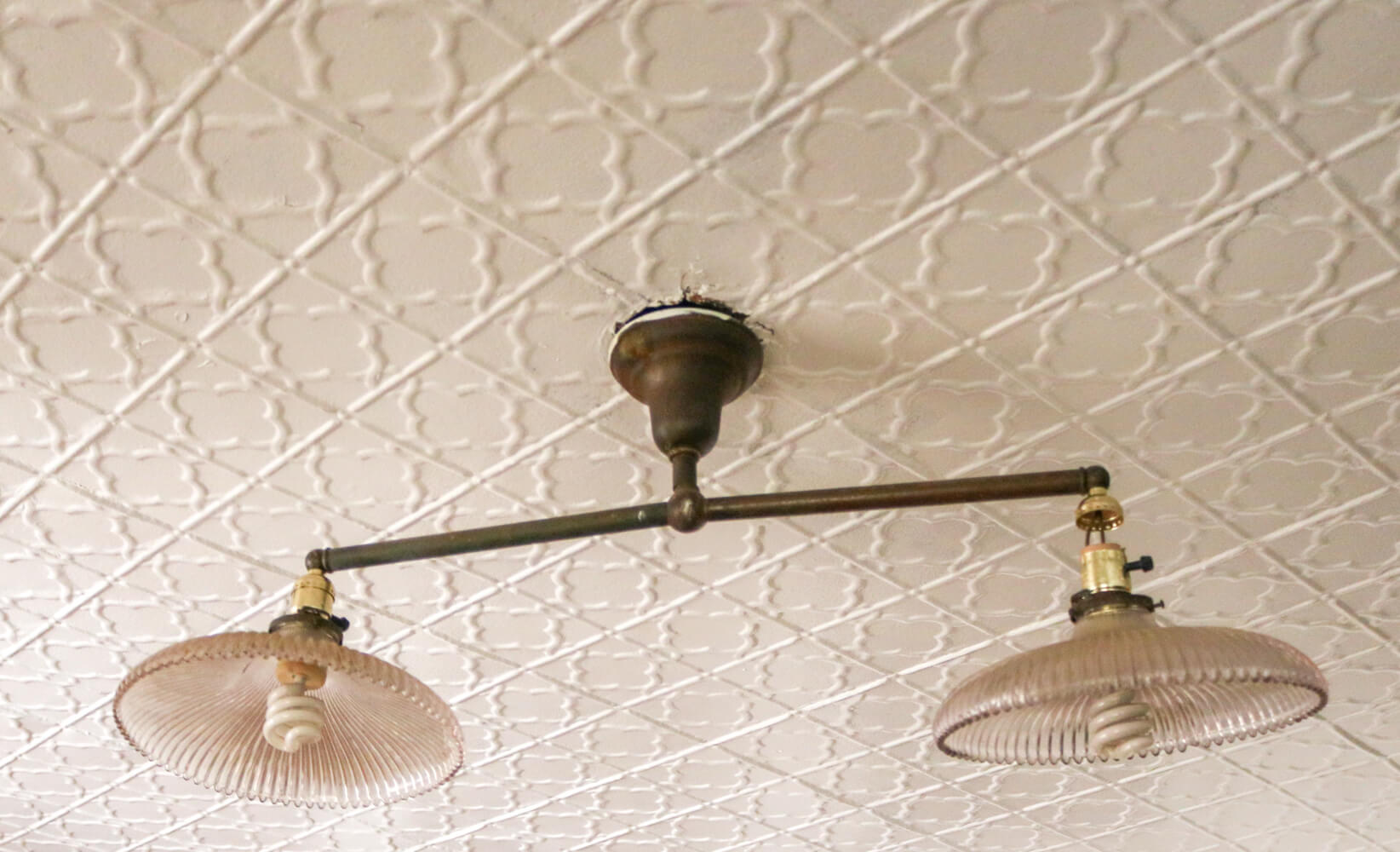
Consider putting tin on a ceiling for an authentic period look, a tin backsplash under cabinets or behind the sink, or in a home bar. It’s possible to DIY this job; panels are nailed to plywood or furring strips.
There are also companies that manufacture drop-in tin ceilings similar to other drop-in ceiling tile methods. You can buy patterns as simple as a hammered field or as complex as a full-blown detailed coffered ceiling with elaborate cornice moldings.
You can still get cherubs frolicking, as well as Deco elements. Many companies also can replicate old designs or create your new original ones. The limits of what you can do with tin are limited only by your imagination.
Related Stories
- From Open Hearths to Open Plan: 350 Telling Years of Kitchen History
- From Pakistan to Brooklyn: A Quick History of the Bathroom
- 7 Fabulous Victorian Bathrooms Keeping It Old School
Email tips@brownstoner.com with further comments, questions or tips. Follow Brownstoner on Twitter and Instagram, and like us on Facebook.





What's Your Take? Leave a Comment